

P9 Fluid Sim File. EPHD asst #4- maintenance and Diagnostics 2014 Final.docx. Reduce Failure of Hydraulic Systems with Preventive Maintenance. The first line of defense in reducing failure of a hydraulic system is to incorporate contamination measurement and control protocols as an integral element of your Preventive Maintenance (PM) program.
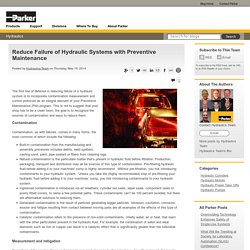
This is not to suggest that your shop has to be a clean room; the goal is to recognize the sources of contamination and ways to reduce them. Contamination Contamination, as with failures, comes in many forms, the most common of which include the following: Built-in contamination from the manufacturing and assembly processes includes debris, weld spatters, casting sand, paint, pipe sealant or fibers from cleaning rags. Natural contamination is the particulate matter that’s present in hydraulic fluid before filtration. Measurement and mitigation Regardless of the source, these contaminants can rarely be seen by the naked eye.
Fluid analysis identifies contaminants at a chemical level. Warning: all filters are not created equal. Diagnostic tools Routine inspections Hose assemblies. Hard lines. Maintenance of Hydraulic Systems - Reliabilityweb: A Culture of Reliability. Lack of maintenance of hydraulic systems is the leading cause of component and system failure yet most maintenance personnel don't understand proper maintenance techniques of a hydraulic system.
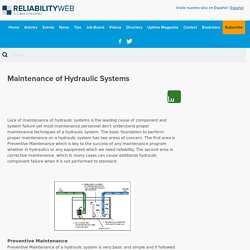
The basic foundation to perform proper maintenance on a hydraulic system has two areas of concern. The first area is Preventive Maintenance which is key to the success of any maintenance program whether in hydraulics or any equipment which we need reliability. The second area is corrective maintenance, which in many cases can cause additional hydraulic component failure when it is not performed to standard.
Preventive Maintenance Preventive Maintenance of a hydraulic system is very basic and simple and if followed properly can eliminate most hydraulic component failure. Hydraulic System Maintenance. The components of hydraulic systems work together intimately.
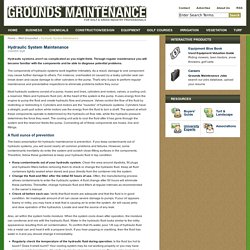
As a result, damage to one component may cause further damage to others. For instance, overheated oil caused by a leaky cylinder seal can break down and cause damage to other cylinders or the pump. That's why it pays to perform regular maintenance and preventative inspections to eliminate problems before they occur. Most hydraulic systems consist of a pump, hoses and lines, cylinders and motors, valves, a cooling unit, a reservoir, filters and hydraulic fluid (oil).
Maintenance. Maintenance Strategies for Pneumatic Actuators. Engineering Essentials: Fundamentals of Hydraulic Pumps. When a hydraulic pump operates, it performs two functions.
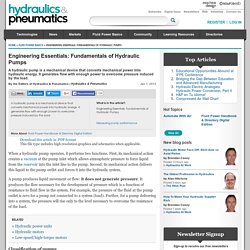
First, its mechanical action creates a vacuum at the pump inlet which allows atmospheric pressure to force liquid from the reservoir into the inlet line to the pump. Second, its mechanical action delivers this liquid to the pump outlet and forces it into the hydraulic system. A pump produces liquid movement or flow: it does not generate pressure. It produces the flow necessary for the development of pressure which is a function of resistance to fluid flow in the system.
For example, the pressure of the fluid at the pump outlet is zero for a pump not connected to a system (load). Classification of pumps All pumps may be classified as either positive-displacement or non-positive-displacement. Positive-displacement principle A positive-displacement pump is one that displaces (delivers) the same amount of liquid for each rotating cycle of the pumping element.
Reciprocating pumps Rotary pumps Figure 2. Figure 3. Pneumatic System - Everyday Maintenance. In pneumatic systems, regular maintenance of all the components is of utmost importance so as to ensure that the system works at its complete potential.
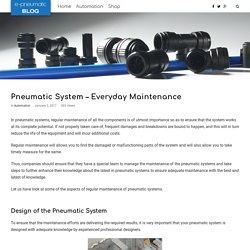
If not properly taken care of, frequent damages and breakdowns are bound to happen, and this will in turn reduce the life of the equipment and will incur additional costs. Regular maintenance will allows you to find the damaged or malfunctioning parts of the system and will also allow you to take timely measure for the same. Thus, companies should ensure that they have a special team to manage the maintenance of the pneumatic systems and take steps to further enhance their knowledge about the latest in pneumatic systems to ensure adequate maintenance with the best and latest of knowledge. Let us have look at some of the aspects of regular maintenance of pneumatic systems. Design of the Pneumatic System The main problem with any pneumatic system is its pipeline and air layout.